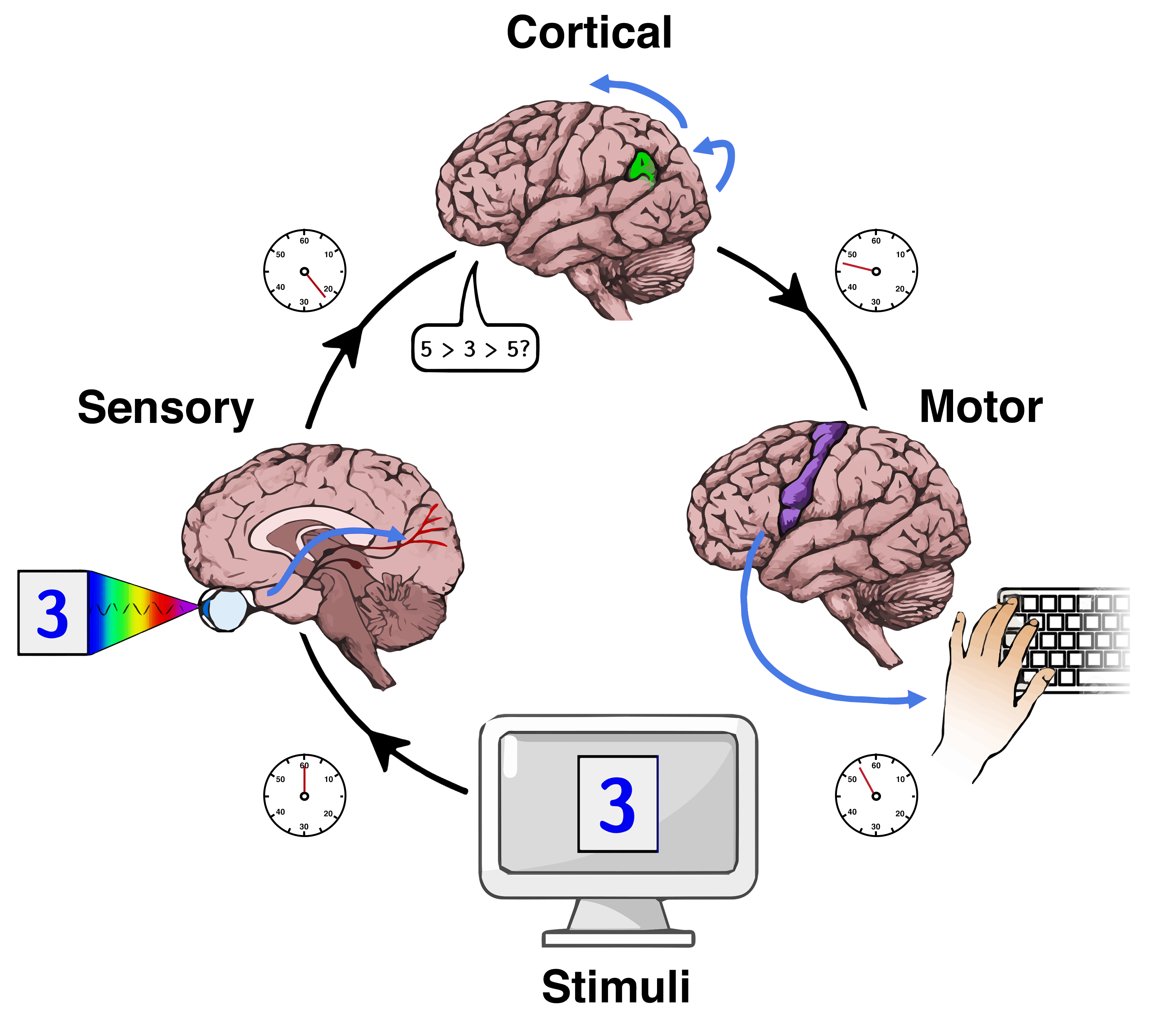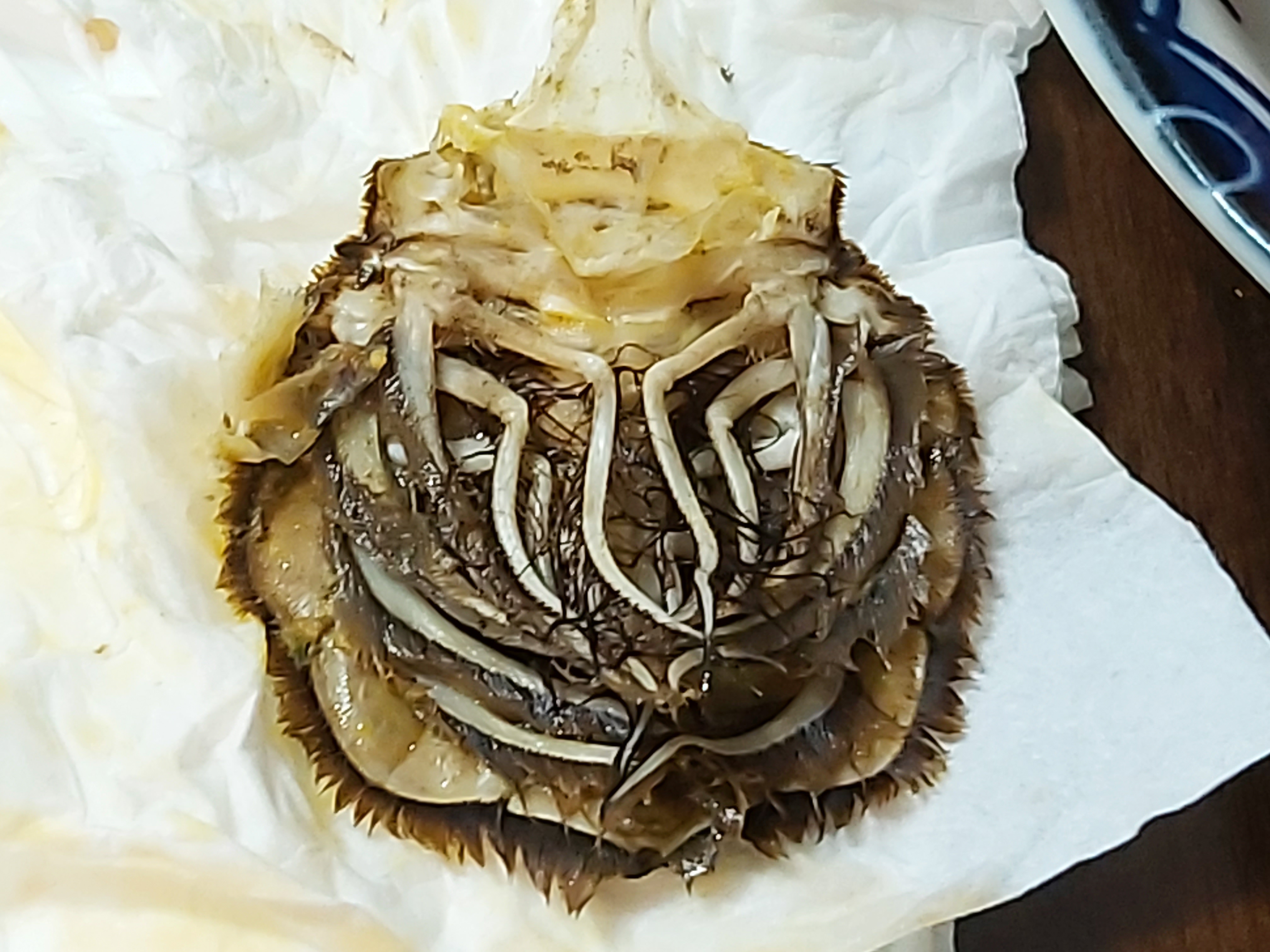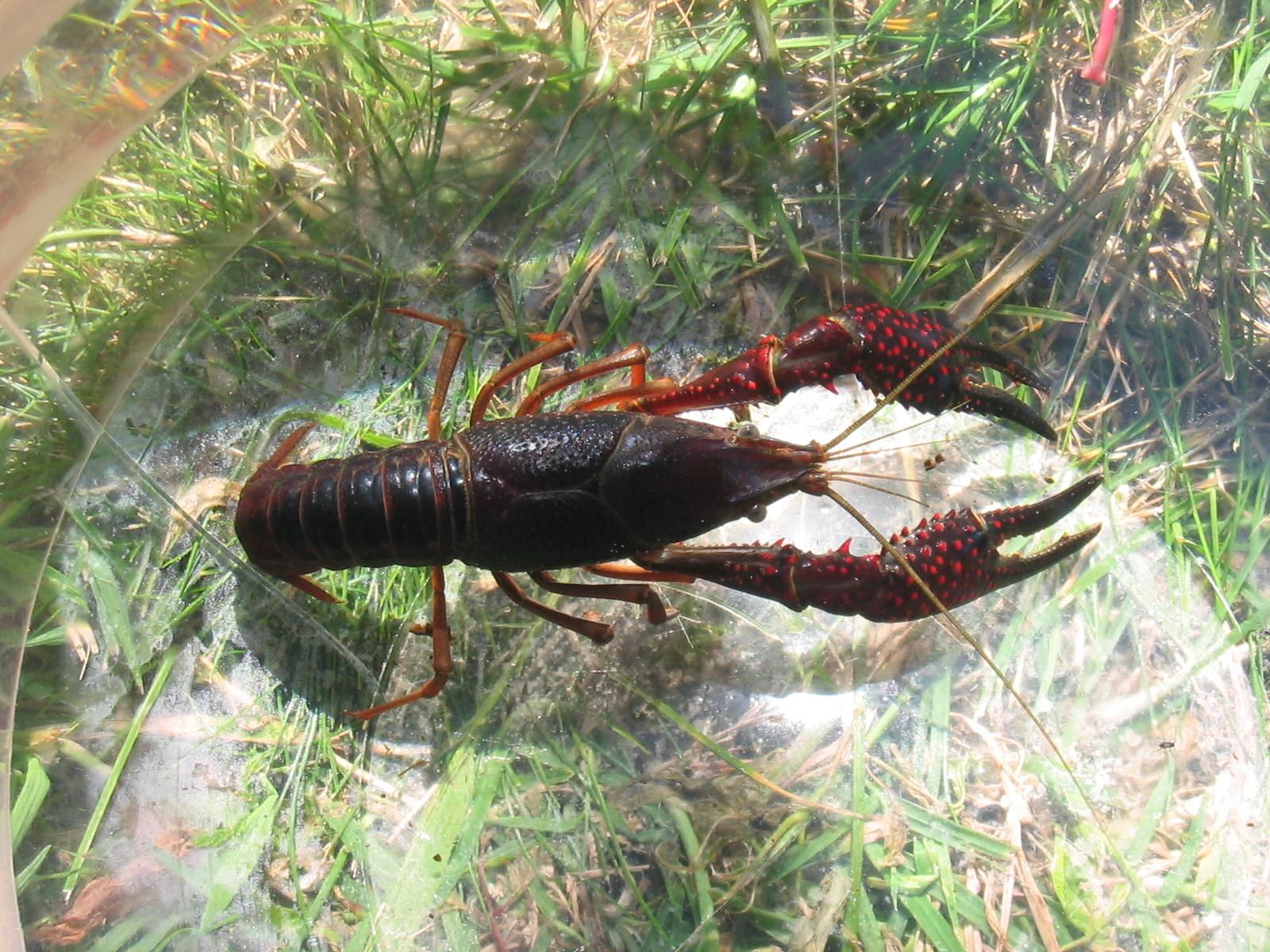|
Lateral Giant Neuron
The lateral giant interneuron (LG) is an interneuron in the abdominal nerve cord of crayfish, lobsters, shrimp of the order Decapoda and their relatives in the crustacean class Malacostraca. It is part of the system that controls a special kind of escape reflex of these organisms known as the " caridoid escape reaction." When the sensory hairs of the tail fan of crayfish are stimulated, the LG activates the motor neurons that control flexion movements of the abdomen in a way that propels the crayfish away from the source of the stimulation. The LG bypasses the main neural system that controls locomotion, thus shortening the reaction time. The lateral giant connection to motor giant fast flexor neurons was the first known example of an electrical synapse . See also *Mauthner cell * Medial giant interneuron *Squid giant axon The squid giant axon is the very large (up to 1.5 mm in diameter; typically around 0.5 mm) axon that controls part of the water jet propulsion ... [...More Info...] [...Related Items...] OR: [Wikipedia] [Google] [Baidu] |
Interneuron
Interneurons (also called internuncial neurons, relay neurons, association neurons, connector neurons, intermediate neurons or local circuit neurons) are neurons that connect two brain regions, i.e. not direct motor neurons or sensory neurons. Interneurons are the central nodes of neural circuits, enabling communication between sensory or motor neurons and the central nervous system (CNS). They play vital roles in reflexes, neuronal oscillations, and neurogenesis in the adult mammalian brain. Interneurons can be further broken down into two groups: local interneurons and relay interneurons. Local interneurons have short axons and form circuits with nearby neurons to analyze small pieces of information. Relay interneurons have long axons and connect circuits of neurons in one region of the brain with those in other regions. However, interneurons are generally considered to operate mainly within local brain areas. The interaction between interneurons allow the brain to perform ... [...More Info...] [...Related Items...] OR: [Wikipedia] [Google] [Baidu] |
Sensory Hair
Sensory may refer to: Biology * Sensory ecology, how organisms obtain information about their environment * Sensory neuron, nerve cell responsible for transmitting information about external stimuli * Sensory perception, the process of acquiring and interpreting sensory information * Sensory receptor, a structure that recognizes external stimuli * Sensory system, part of the nervous system of organisms Business and brands * Sensory, Inc., an American speech technology company Other uses * Sensory analysis, a consumer product-testing method * Sensory garden A sensory garden is a self-contained garden area that allows visitors to enjoy a wide variety of sensory experiences. Sensory gardens are designed to provide opportunities to stimulate the senses, both individually and in combination, in ways that ..., a self-contained garden area that allows visitors to enjoy a wide variety of sensory experiences See also * Sensor * Sense (other) {{Disambiguation ... [...More Info...] [...Related Items...] OR: [Wikipedia] [Google] [Baidu] |
Squid Giant Axon
The squid giant axon is the very large (up to 1.5 mm in diameter; typically around 0.5 mm) axon that controls part of the water jet propulsion system in squid. It was first described by L. W. Williams in 1909, but this discovery was forgotten until English zoologist and neurophysiologist J. Z. Young demonstrated the axon's function in the 1930s while working in the Stazione Zoologica in Naples, the Marine Biological Association in Plymouth and the Marine Biological Laboratory in Woods Hole. Squids use this system primarily for making brief but very fast movements through the water. On the underside of the squid's body, between the head and the mantle, is a siphon through which water can be rapidly expelled by the fast contractions of the body wall muscles of the animal. This contraction is initiated by action potentials in the giant axon. Action potentials travel faster in a larger axon than a smaller one, and squid have evolved the giant axon to improve the speed ... [...More Info...] [...Related Items...] OR: [Wikipedia] [Google] [Baidu] |
Medial Giant Interneuron
The medial giant interneuron (MG) is an interneuron in the abdominal nerve cord of crayfish. It is part of the system that controls the caridoid escape reaction of crayfish, clawed lobsters, and other decapod crustaceans. Crayfish have a pair of medial giants running the length of the entire animal, and are the largest neurons in the animal. When a crayfish is given a sudden visual or tactile stimulus to the front part of the animal, the MG activates fast flexor motor neurons that cause the abdomen to flex, resulting in the crayfish moving directly backward, away from the source of the stimulation. This connection was first demonstrated by C. A. G. Wiersma in the red swamp crayfish, ''Procambarus clarkii''. The medial giant interneurons are less well studied than the lateral giant neurons, which trigger a similar escape behavior. See also *Squid giant axon The squid giant axon is the very large (up to 1.5 mm in diameter; typically around 0.5 mm) axon that controls part ... [...More Info...] [...Related Items...] OR: [Wikipedia] [Google] [Baidu] |
Mauthner Cell
The Mauthner cells are a pair of big and easily identifiable neurons (one for each half of the body) located in the rhombomere 4 of the hindbrain in fish and amphibians that are responsible for a very fast escape reflex (in the majority of animals – a so-called C-start response). The cells are also notable for their unusual use of both chemical and electrical synapses. Evolutionary history Mauthner cells first appear in lampreys (being absent in hagfish and lancelets), and are present in virtually all teleost fish, as well as in amphibians (including postmetamorphic frogs and toads). Some fish, such as lumpsuckers, seem to have lost the Mauthner cells however. Role in behavior The C-start A C-start is a type of a very quick startle or escape reflex that is employed by fish and amphibians (including larval frogs and toads). There are two sequential stages in the C-start: first, the head rotates about the center of mass towards the direction of future escape, and the ... [...More Info...] [...Related Items...] OR: [Wikipedia] [Google] [Baidu] |
Electrical Synapse
Electricity is the set of physical phenomena associated with the presence and motion of matter that has a property of electric charge. Electricity is related to magnetism, both being part of the phenomenon of electromagnetism, as described by Maxwell's equations. Various common phenomena are related to electricity, including lightning, static electricity, electric heating, electric discharges and many others. The presence of an electric charge, which can be either positive or negative, produces an electric field. The movement of electric charges is an electric current and produces a magnetic field. When a charge is placed in a location with a non-zero electric field, a force will act on it. The magnitude of this force is given by Coulomb's law. If the charge moves, the electric field would be doing work on the electric charge. Thus we can speak of electric potential at a certain point in space, which is equal to the work done by an external agent in carrying ... [...More Info...] [...Related Items...] OR: [Wikipedia] [Google] [Baidu] |
Reaction Time
Mental chronometry is the scientific study of processing speed or reaction time on cognitive tasks to infer the content, duration, and temporal sequencing of mental operations. Reaction time (RT; sometimes referred to as "response time") is measured by the elapsed time between stimulus onset and an individual's response on elementary cognitive tasks (ETCs), which are relatively simple perceptual-motor tasks typically administered in a laboratory setting. Mental chronometry is one of the core methodological paradigms of human experimental psychology, experimental, cognitive psychology, cognitive, and differential psychology, but is also commonly analyzed in Physiological psychology, psychophysiology, cognitive neuroscience, and behavioral neuroscience to help elucidate the biological mechanisms underlying perception, attention, and decision-making in humans and other species. Mental chronometry uses measurements of elapsed time between sensory stimulus onsets and subsequent behavi ... [...More Info...] [...Related Items...] OR: [Wikipedia] [Google] [Baidu] |
Abdomen
The abdomen (colloquially called the belly, tummy, midriff, tucky or stomach) is the part of the body between the thorax (chest) and pelvis, in humans and in other vertebrates. The abdomen is the front part of the abdominal segment of the torso. The area occupied by the abdomen is called the abdominal cavity. In arthropods it is the posterior tagma of the body; it follows the thorax or cephalothorax. In humans, the abdomen stretches from the thorax at the thoracic diaphragm to the pelvis at the pelvic brim. The pelvic brim stretches from the lumbosacral joint (the intervertebral disc between L5 and S1) to the pubic symphysis and is the edge of the pelvic inlet. The space above this inlet and under the thoracic diaphragm is termed the abdominal cavity. The boundary of the abdominal cavity is the abdominal wall in the front and the peritoneal surface at the rear. In vertebrates, the abdomen is a large body cavity enclosed by the abdominal muscles, at front and to ... [...More Info...] [...Related Items...] OR: [Wikipedia] [Google] [Baidu] |
Motor Neuron
A motor neuron (or motoneuron or efferent neuron) is a neuron whose cell body is located in the motor cortex, brainstem or the spinal cord, and whose axon (fiber) projects to the spinal cord or outside of the spinal cord to directly or indirectly control effector organs, mainly muscles and glands. There are two types of motor neuron – upper motor neurons and lower motor neurons. Axons from upper motor neurons synapse onto interneurons in the spinal cord and occasionally directly onto lower motor neurons. The axons from the lower motor neurons are efferent nerve fibers that carry signals from the spinal cord to the effectors. Types of lower motor neurons are alpha motor neurons, beta motor neurons, and gamma motor neurons. A single motor neuron may innervate many muscle fibres and a muscle fibre can undergo many action potentials in the time taken for a single muscle twitch. Innervation takes place at a neuromuscular junction and twitches can become superimposed as a resul ... [...More Info...] [...Related Items...] OR: [Wikipedia] [Google] [Baidu] |
Decapod Anatomy
The decapod (crustaceans such as a crab, lobster, shrimp or prawn) is made up of 20 body segments grouped into two main body parts: the cephalothorax and the pleon (abdomen). Each segment may possess one pair of appendages, although in various groups these may be reduced or missing. They are, from head to tail: Cephalothorax Head #antennules # antennae # mandibles # first maxillae # second maxillae The head also bears the (usually stalked) compound eyes. The distal portion of a mandible or maxilla which has a sensory function is known as a palp. Thorax / pereon #first maxillipeds #second maxillipeds #third maxillipeds #first pereiopods #second pereiopods #third pereiopods #fourth pereiopods #fifth pereiopods Maxillipeds are appendages modified to function as mouthparts. Particularly in the less advanced decapods, these can be very similar to the pereiopods. Pereiopods are primarily walking legs and are also used for gathering food. They are also the ten legs from which decapo ... [...More Info...] [...Related Items...] OR: [Wikipedia] [Google] [Baidu] |
Caridoid Escape Reaction
The caridoid escape reaction, also known as lobstering or tail-flipping, refers to an innate escape mechanism in marine and freshwater crustaceans such as lobsters, krill, shrimp and crayfish. The reaction, most extensively researched in crayfish, allows crustaceans to escape predators through rapid abdominal flexions that produce powerful swimming strokes—thrusting the crustacean backwards through the water and away from danger. The type of response depends on the part of the crustacean stimulated, but this behavior is complex and is regulated both spatially and temporally through the interactions of several neurons. Discovery of the first command neuron-mediated behavior In 1946, C. A. G. Wiersma first described the tail-flip escape in the crayfish ''Procambarus clarkii'' and noted that the giant interneurons present in the tail were responsible for the reaction. The aforementioned neuronal fibres consist of a pair of lateral giant interneurons and a pair of medial giant in ... [...More Info...] [...Related Items...] OR: [Wikipedia] [Google] [Baidu] |
Abdominal
The abdomen (colloquially called the belly, tummy, midriff, tucky or stomach) is the part of the body between the thorax (chest) and pelvis, in humans and in other vertebrates. The abdomen is the front part of the abdominal segment of the torso. The area occupied by the abdomen is called the abdominal cavity. In arthropods it is the posterior tagma of the body; it follows the thorax or cephalothorax. In humans, the abdomen stretches from the thorax at the thoracic diaphragm to the pelvis at the pelvic brim. The pelvic brim stretches from the lumbosacral joint (the intervertebral disc between L5 and S1) to the pubic symphysis and is the edge of the pelvic inlet. The space above this inlet and under the thoracic diaphragm is termed the abdominal cavity. The boundary of the abdominal cavity is the abdominal wall in the front and the peritoneal surface at the rear. In vertebrates, the abdomen is a large body cavity enclosed by the abdominal muscles, at front and to the sid ... [...More Info...] [...Related Items...] OR: [Wikipedia] [Google] [Baidu] |

.jpg)





